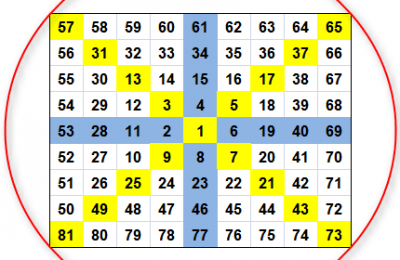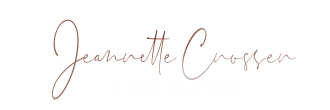Contents

The pattern is complete when the price breaks below the support line. This signals the end of the uptrend and the bears are coming. It is created when the stock price declines after reaching a peak, forms an upside-down cup shape, and then rallies back to near the previous high before declining again. The above content provided and paid for by Public and is for general informational purposes only. It is not intended to constitute investment advice or any other kind of professional advice and should not be relied upon as such.
- Use this simple, 10-step checklist below to discover how to identify a cup and handle pattern—the right way.
- This means that the handle of a cup and handle is considered a strong indication that the stock is poised for growth.
- The pullback after the completion of the cup forms the handle.
- IG accepts no responsibility for any use that may be made of these comments and for any consequences that result.
- The inverted “cup and handle” is the opposite of the regular cup and handle.
The last time I checked, simply drawing a line up in the air means absolutely squat. The candles of the handle should have small bodies and in a very tight range. Stay on top of upcoming market-moving events with our customisable economic calendar.
How to Trade Cup and Handle Pattern – Working, Interpretation & Profit Targets
The full pattern is complete when price breaks out of this consolidation in the direction of the cups advance. The cup and handle pattern is generally seen as a bullish pattern and can be used by traders to identify potential buying opportunities. The pattern is created when the stock price forms a “cup” shape, followed by a brief dip (the “handle”). Ideally, a handle should form no more than 15% below the left high of the cup and should slope downwards, not upwards.
A https://bigbostrade.com/ and handle pattern occurs when the underlying asset forms a chart that resembles a cup in the shape of a U, and a handle represented by a slight downward trend after the cup. Technical analysis focuses on market action — specifically, volume and price. Technical analysis is only one approach to analyzing stocks. When considering which stocks to buy or sell, you should use the approach that you’re most comfortable with. Another issue has to do with the depth of the cup part of the formation.
A tight consolidation will reduce the risk, and volume often drops significantly just before a big price move higher. Your position is not random or based on how strongly you feel about a trade or stock. It is based on the difference between your entry and stop loss, your risk tolerance, and the amount of capital you have. Instead of using a buy stop limit order, you may also have a watch list and just enter when you see a breakout. Or, you can wait for the breakout and then enter near the close of the day if it was a strong breakout with a nice volume increase. The stop loss goes below the low of the breakout day with that last approach.
Bulkowski on the Cup with Handle
The drop of the handle part should retrace about 30% to 50% of the rise at the end of the cup. For stock prices, the pattern may span from a few weeks to a few years; but commonly the cup lasts from 1 to 6 months, while the handle should only last for 1 to 4 weeks. Fourthly, the price of the asset stabilizes for a period of time.
![]()
But the main alternative to this type of analysis is fundamental analysis. It focuses on how the company is doing financially and operationally and can complement the insights of technical analysis. Thirdly, the price of the asset will then recover to approximately its original value.
In this example, the breakout point was $1.705, and the price target will be the depth of the cup. After the cup forms, the price attempts to rebound from the support trendline. The downward breakout is confirmed when prices close below the support line that marks the bottom of the cup. The increased selling pressure pushes the price lower to retest the support level. Day trading an inverse cup and handle pattern can be very profitable if you know what you’re doing.
What Is Basis Trading? Profit by Arbitraging…
Use the smaller height and add it to the breakout point for a conservative target. You could also use the larger height for an aggressive target. Since the handle must occur within the upper half of the cup, a properly placed stop-loss should not end up in the lower half of the cup formation.
Once rising prices are above the top of the cup it signals a valid buy signal. Typically, it is believed that the upside rally will and once price action has gone above the top of the cup equal to the distance between the bottom and top of the cup. So far we have only shown some anecdotal evidence of the cup and handle pattern. The breakout from the handle’s trading range signals a continuation of the prior uptrend.
Once it settles down, that is when I get really interested. In the charts below I have picked a few good examples of the pattern, and highlighted some of the traits we are looking for in a cup and handle stock. Thomas Bulkowski’s backtests are also lacking strict buy and sell rules, and he argues the cup and handle strategy is inferior to many other patterns. It forms after a price rally, and its depth should be 30-50% of the rally preceding it.
The https://forex-world.net/ and handle tells you that the price will continue with its bullish trend. It also tells you where to expect the initial resistance level. This resistance happens at the level where the price reached and started falling. The cup and handle pattern is part of the so-called continuation patterns. Other such patterns are the ascending and descending triangle pattern and bullish and bearish flags and pennants. The cup part of the pattern should be fairly shallow, with a rounded or flat “bottom” (not a V-shaped one), and ideally reach to the same price at the upper end of both sides.
Noting key https://forexarticles.net/ at top#1 and top#2, speculators begin to initiate short positions. From a technical perspective, this is a very important part of the pattern. At this point more positive fundamental news is released and the stock price rallies. With selling pressures satiated and the flow of fundamental news decidedly bullish volume increases dramatically and the stock works toward a fresh new high. The next session Wall Street analysts make positive comments and the stock surges to a new high on dramatically increased volume.
What you want to do is to wait for the pattern to fully form. That’s when the support line is broken, and prices must close below this level. What is VWAP Indicator and How to Use it for Trading The VWAP indicator shows the volume-weighted average market price of a particular stock. The inverted cup and handle pattern is in direct contrast to the cup and handle pattern. Let’s look at an example of what the trends in a cup and handle pattern look like.
O’Neil found that stocks that formed this pattern tended to outperform the market over the ensuing 12-month period. In the cup and handle pattern, as the stock price moves upwards, there is selling pressure among investors who want to consolidate their profits at new highs. As a result, there is a downward spiral in the price movement and a price correction.
It is a prediction that the security’s price will move upward following a breakout. First described by William O’Neil in his book ‘How to Make Money in Stocks’ in 1988, the formation of this chart pattern depicts a good buying opportunity. A bearish cup and handle, or inverted cup and handle, is when a stock is in a downtrend, it has a brief rally and then starts dropping again back toward the prior lows. If interested in trading this pattern, focus on stocks that are extremely weak, as opposed to looking for the pattern in strong stocks. I don’t personally look for inverted cup and handles in stocks or trade them.
Example Of A Failed Cup And Handle Chart Pattern In The Stock Market
However, the price fails to continue moving higher and instead it reverses and declines much lower. For those who would like more information simply usethis link. This pattern was created by William O’Neill who founded a stock brokerage company firm before launching the business newspaper, “Investor’s Business Daily” in 1984. He is the author of, “How to Make Money in Stocks”, 24 essential lessons for investment success. In the market where false signals are readily available, you can essentially use the Ichimoku Cloud to ignore signals, which lack conviction. Now, let’s revisit the same chart using the logic of selling the supply or upper resistance line on the chart.
Completion of the cup and handle pattern occurs after the price breaks out above the high of the handle and zooms higher. DXY upward movement continues In the cup handle formation, the targets are determined according to the fibonacci. The Cup and Handle pattern is where the price initially declines, then levels off and begins to rise again, thus resembling a cup with a handle. The good thing with a buy stop order is your entry will just be above the highs of the “handle”, and if the breakout is real, that’s one of the best prices to get in. A good example of cup and handle pattern at work is to look at the long-term chart of gold.
The Cup and Handle pattern confirmation comes when the price breaks above the “handle” — and that’s where you can enter a trade. The last thing you want to do is short the market because it’s likely to breakout higher. As you can see below, the price of gold has been on a bullish trend for years. The price reached an all-time high of $1920 on September 2011. First, the downturn indicates investors moving off of a stock that had been growing, often for fear of an overvalued asset or to book gains.
